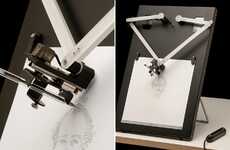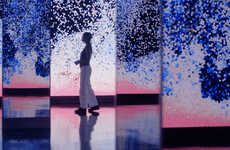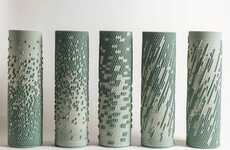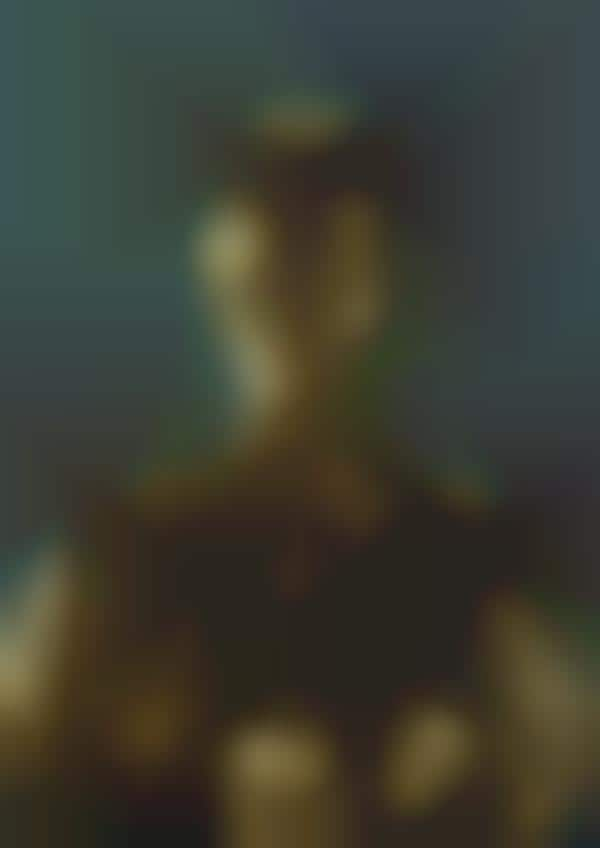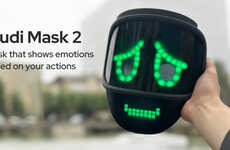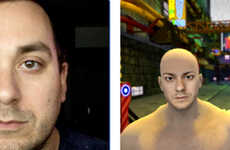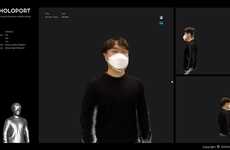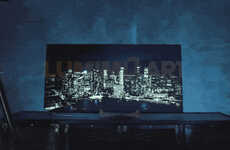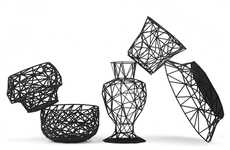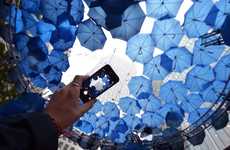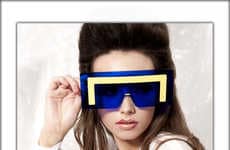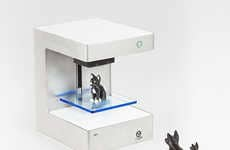
The 3D Kinect Art Portraits are Beautifully Blurred
M — June 1, 2013 — Art & Design
References: mikepelletier.nl
Artist Mike Pelletier uses Microsoft's Kinect as a 3D scanner to create ambiguous-looking people in 'Kinect Portraits.'
Microsoft's Kinect is a web cam-like, motion-detecting device that senses and captures body movement for XBOX games. Mike Pelletier creatively uses the Kinect to create 3D images, rather than the conventional 2D images, by moving the camera entirely around the subject. If the subject is able to stay still enough, the result is these neat pixelated 3D images.
Mike Pelletier's Kinect Portraits look more like gold sculptures rather than painting portraits. Because the Kinect camera can't pick up too much detail, there aren't any distinct facial features or details in the portraits so the emphasis is entirely on the shapes and forms. A beautifully geometric portrait rendition, these 3D Kinect Portraits are a technological take on the art of portrait drawing.
Microsoft's Kinect is a web cam-like, motion-detecting device that senses and captures body movement for XBOX games. Mike Pelletier creatively uses the Kinect to create 3D images, rather than the conventional 2D images, by moving the camera entirely around the subject. If the subject is able to stay still enough, the result is these neat pixelated 3D images.
Mike Pelletier's Kinect Portraits look more like gold sculptures rather than painting portraits. Because the Kinect camera can't pick up too much detail, there aren't any distinct facial features or details in the portraits so the emphasis is entirely on the shapes and forms. A beautifully geometric portrait rendition, these 3D Kinect Portraits are a technological take on the art of portrait drawing.
Trend Themes
1. 3D Scanning - Companies in the entertainment, fashion, and medicine industries can leverage 3D scanning technology like Microsoft's Kinect to create unique products or services.
2. Ambiguous Art - Artists and galleries can capitalize on the trend towards ambiguous art by offering exhibits or creating pieces that challenge the viewer's perception or interpretation.
3. Geometric Art - The use of geometric shapes and forms in art and design can be a disruptive innovation opportunity for companies looking to differentiate themselves in the market.
Industry Implications
1. Entertainment - The entertainment industry can use 3D scanning technology to create lifelike avatars for video games or virtual reality experiences.
2. Art - Galleries and artists can create unique pieces using 3D scanning technology and embrace the trend towards ambiguous and geometric art.
3. Fashion - Fashion designers and brands can use 3D scanning technology to create custom-fit clothing based on a person's exact body measurements.
1.8
Score
Popularity
Activity
Freshness

